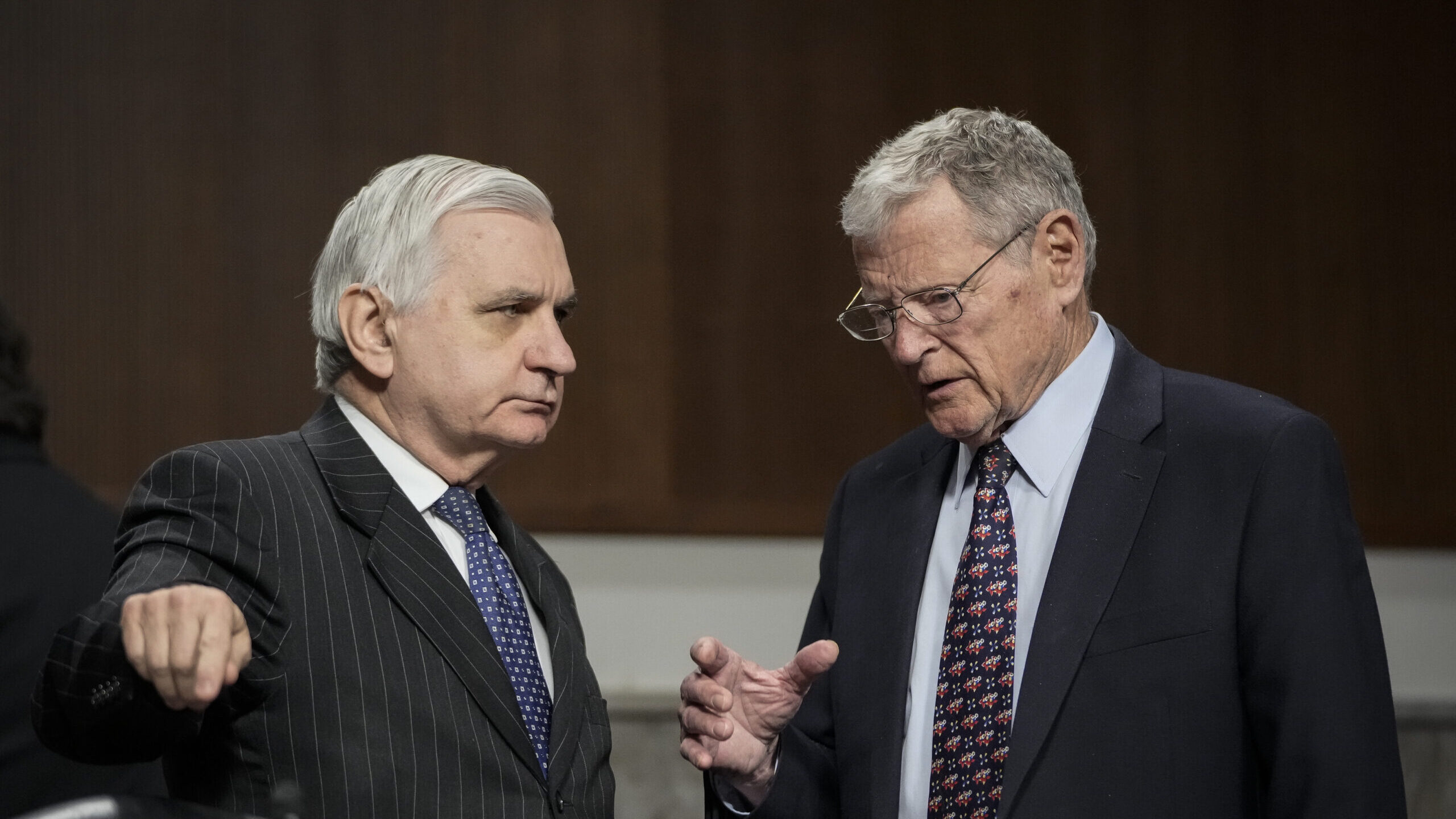ASHLEY ROQUE

WASHINGTON — As a divided Congress is gearing up for budget season, the Senate Armed Services Committee plans to focus on four imperatives: examining how the military will fight on future battlefields, exploring new weapon programs, looking for ways to shore up the industrial base and taking better care of troops.
While SASC Chairman Sen. Jack Reed told reporters “sustaining the warfighter” tops that list, the other three areas revolve around weapon procurement and supporting technology lines, and ensuring that the Pentagon is best aligned to use those capabilities.
“First, is reimagining how we fight,” Reed said at a Defense Writers Group event. “We are in a tremendously dynamic situation where technologies are changing rapidly, techniques are changing rapidly [and so are] operational issues.”
“All that has to be reimagined and integrated, and experience in Ukraine is giving us insights for this transformation,” he later added.
Next on Reed’s list is ensuring that the services are buying equipment that is “capable of operating effectively”.
The SASC is charged with oversight of Pentagon policies and helping to ensure the department is investing wisely, so that priority is not a surprise. Part of the continued work this year, though, will involve a deep dive into lessons learned from the war in Ukraine and what it means for US programs.
Insights gleaned about electronic warfare and software, for example, might be more quickly and easily adapted by American forces. But it’ll take longer to evaluate major weapons platforms, and Reed warned that service leaders or lawmakers may not decide until “further down the road” to cancel any big-ticket programs because “we determined it was not effective in this new context.”
In conjunction with scrutinizing weapon capabilities, Reed said his committee will once again look at the industrial base to figure out ways to boost weapon production.
“The fact that our previous planning didn’t really anticipate a massive artillery duels, [like] the actions we’re seeing in Ukraine, and we operated from a position of thinking that our industrial base was rather complete,” Reed told reporters.
Over the past year, the Pentagon officials, lawmakers and industry have all grappled with what to do over dwindling weapons stockpiles as the Biden administration continues sending Ukraine weapons. Munitions in particular, has been a focal point, and Reed said that will continue to be a theme in the committee this year.
While he did not detail what additional steps lawmakers may take, in the fiscal 2023 defense authorization and appropriations bills they provided service acquisition officials with expanded authorities to ink new, multi-year production contracts for smaller weapons lines. Traditionally, these deals have been reserved for larger ship and aircraft programs but are now expanded to include a variety of munition lines in hopes of stabilizing demand.
This move now means the Army is now working with companies to iron those deals and new contracts will likely be inked in a February and March timeframe, according to Assistant Secretary of the US Army for Acquisition, Logistics, and Technology Douglas Bush.
Bush noted that such deals may involve munitions for the Patriot launcher (possibly Lockheed Martin’s PAC-3 Missile Segment Enhancement weapons) and for the M142 High Mobility Artillery Rocket System (HIMARS) launcher that fires Lockheed’s Guided Multiple Launch Rocket Systems (GMLRS) and Army Tactical Missile System (ATACMS) missiles. The service also wants to replenish its 155mm stockpile — an effort that includes acquiring the metal shell, explosives, fuse and charge.
Elsewhere in the talk, Reed said he is seeking additional information on China’s high-altitude balloon program and why at least three other balloons were able to float near or across parts of the US without being detected. On Monday, Gen. Glen VanHerck, the commander of USNORTHCOM and the North American Aerospace Defense Command (NORAD), told reporters the US has “a domain awareness gap” that needs to be addressed but did not provide additional information.
“Why did we detect this [balloon] system and why did we fail to detect the other system?” Reed asked.
Lawmakers, including Reed, expect to learn more later this week about those past incidents and what they hear could drive additional investments in capabilities like over-the-horizon radars, or drive broader changes.
New Subcommittee Heads Announced
On Tuesday evening, Reed and his Republican counterpart, Sen. Roger Wicker of Mississippi, announced their picks for subcommittee leaders.The Airland subcommittee will be led by Sen. Mark Kelly, D-Ariz., and Sen. Tom Cotton, R-Ark.
The Cybersecurity subcommittee will be led by Sen. Joe Manchin, D-WV, and Sen. Mike Rounds, R-SD.
The Emerging Threats and Capabilities subcommittee will be led by Sen. Kirsten Gillibrand, D-NY, and Sen. Joni Ernst, R-Iowa.
The Personnel subcommittee will be led by Sen. Elizabeth Warren, D-Mass., and Sen. Rick Scott, R-Fla.
The Readiness and Management Support subcommittee will be led by Sen. Mazie Hirono, D-Hawaii, and Sen. Dan Sullivan, R-Alaska.
The Seapower subcommittee will be led by Sen. Tim Kaine D-Va., and Sen. Kevin Cramer, R-ND.
The Strategic Forces subcommittee will be led by Sen. Angus King, I-Maine, and Sen. Deb Fischer, R-Neb.
No comments:
Post a Comment